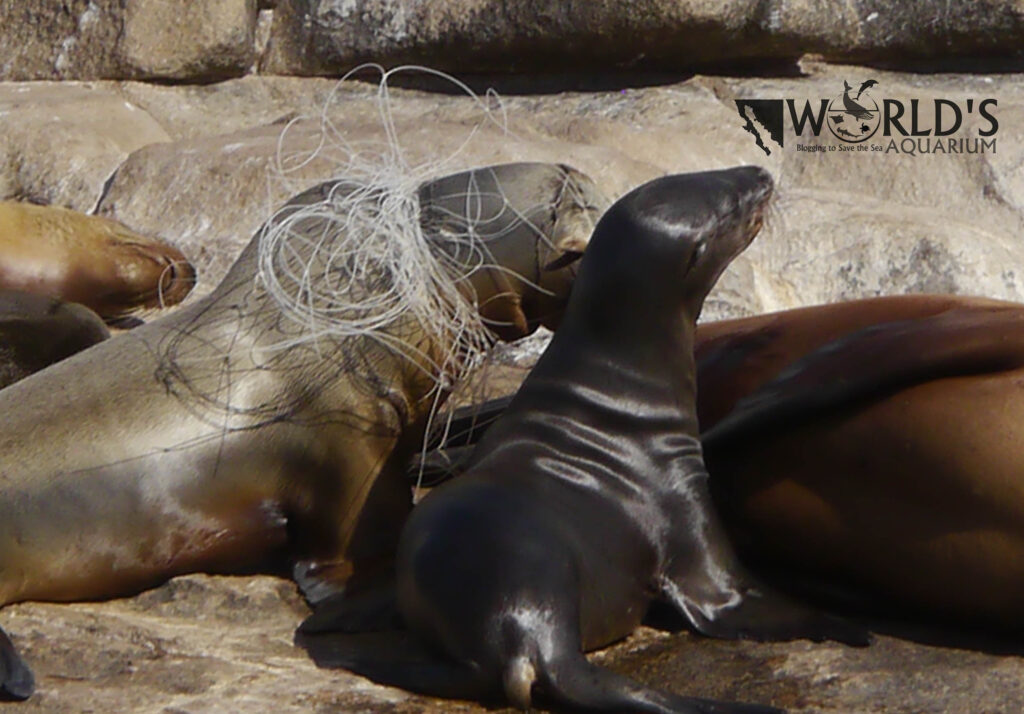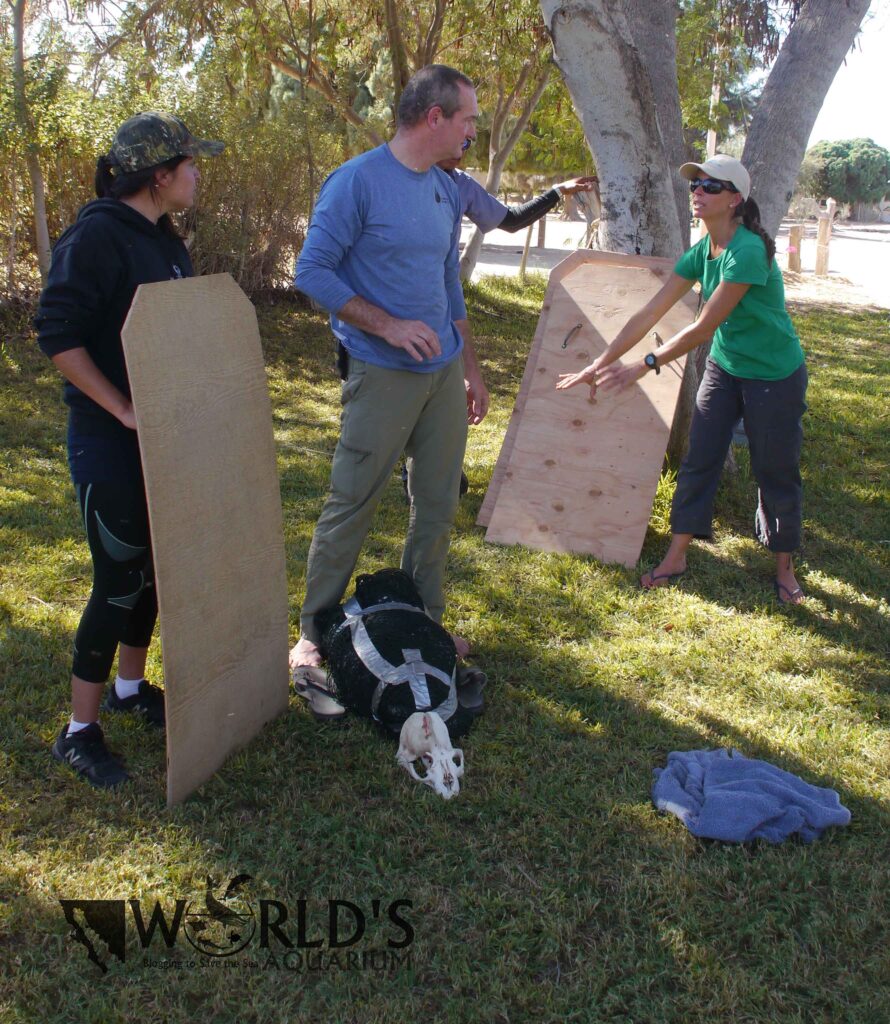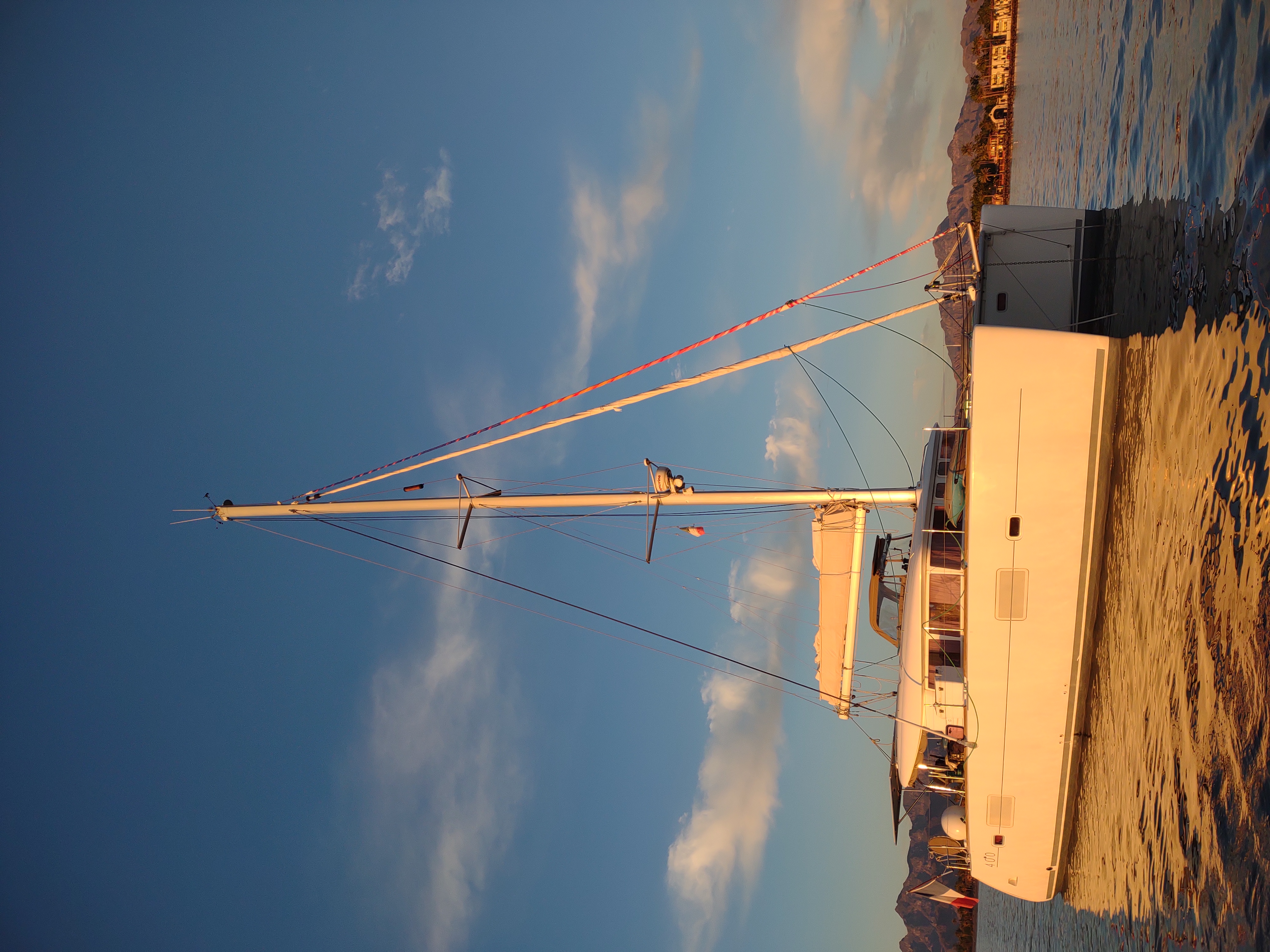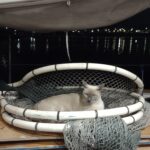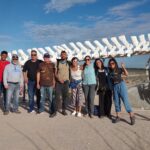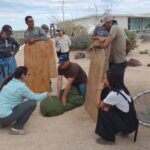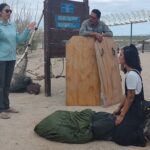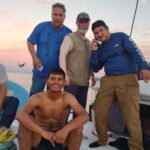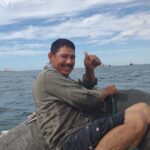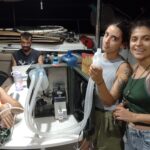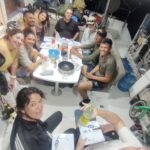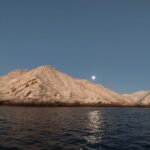The ABC’s of Sea Lion Salvation
by Vince Radice
Where does one start when discussing sea lion disentanglement (SLD)? I reckon the beginning will do. First and foremost, the process of SLD begins with committed individuals who are willing to often spend their own time and possibly their own resources to go into the field and risk possible injury to do the dirty and difficult job of saving the life of a sea lion that is slowly and mercilessly being strangled to death. A process that can go on for several years before the animal eventually subcomes to its entanglement. It should be noted that sea lions are dying as a direct result of human behaviour. Usually as a result from carelessly discarded monofilament fishing line from commercial and sport fishing activity in the vicinity of sea lion colonies. This is a world-wide problem and not limited to the Gulf of California. I will keep this description specific in regard to what the process involves in Mexico. SLD in the United States, will be different bureaucratically speaking, but regarding work In the field, the process will remain essentially the same.
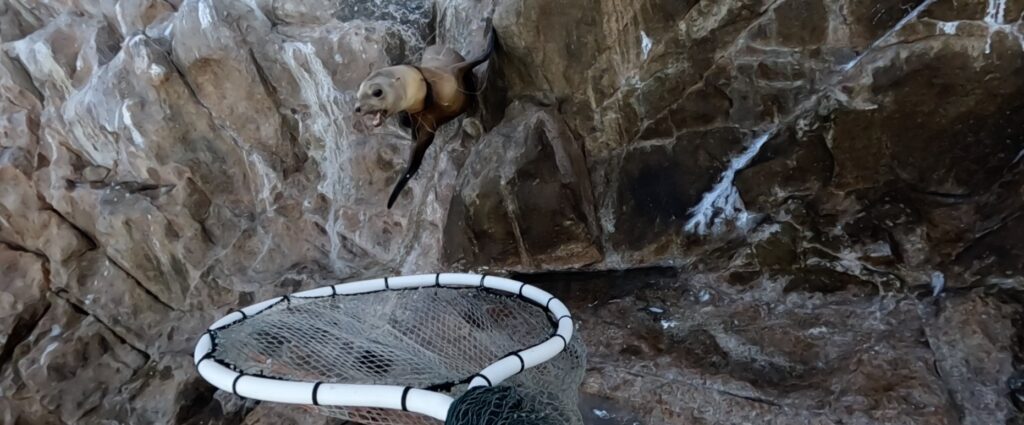
We named her Mimi because she was sleeping so soundly, we caught her easily!
In the state of Sonora Mexico, World’s Aquarium (WA), a 501c3 non-profit registered in the state of Washington, works with several non-profit organizations located in Mexico and at least two, but sometimes more, government agencies. Our latest SLD mission at Isla San Jorge in early October 2022 was the most successful rescue mission ever in Mexico. Three non-profits participated and two governmental agencies. The two other non-profits that participated are CABET also known as Rescate de Lobos Marinos, a non-profit out of La Paz Baja California Sur, and Grupo Lobos, a non-profit based in Campodonico, a small community of farmers and commercial fisherman located 35 miles south of Puerto Peñasco, Sonora Mexico. The two governmental agencies that participated were PROFEPA, Mexico’s version of America’s FDA and CONANP, Mexico’s version of America’s national parks system.
In order for non-profits to be able to go into the field, they must first be trained in SLD. Initial training for all participants in Sonora was provided by the Marine Mammal Center (MMC) located in Sausalito California. In order for non-profits in Mexico to go into the field, a permit must be acquired from the federal government of Mexico. The permitting process is long and arduous and takes months to acquire. The permit expires in one year. In order for a non-profit to secure a permit, they must have on staff a licenced veterinarian trained and certified in SLD. World’s Aquarium began training with the MMC at Espritu Santo island in November 2016. We spent the better part of a week in training. Since our initial training, we have sponsored one workshop in Puerto Peñasco. One of our long term goals in Puerto Peñasco will be to disentangle all sea lions that inhabit San Jorge island and sponsor workshops to the commercial fishing community, so they might modify current fishing techniques that are endangering the sea lion colony there, which boasts one of the largest if not the largest sea lion colony in the Gulf of California.
How we work in the field
There are many sea lion colonies in the Gulf of California, and each island represents distinct logistical challenges for SLD. San Jorge is the worst island in the gulf in regard to how many animals are actually entangled. A key component for any rescue missions is weather. I personally chose the date for our extremely successful 2022 rescue mission as the beginning of October. It is crucial that we have light wind at the island. The beginning of October in the Sea of Cortes means light humidity, as well as almost no strong winds from the south or the north. We were blessed on our last mission with 5 glorious days in a row with little wind. We were rewarded from that blessing and broke all records for SLD. In 4 and a half days of work, we captured a grand total of 16 animals. Thirteen of which were disentangled, one animal escaped after capture and two small unentangled animals were captured for blood samples. Work at the island starts with all groups meeting at the island. It should be mentioned that this is the first time ever that all team members stayed at San Jorge island and did not return to the coast. Rescate de Lobos Marinos and our representative from PROFEPA were transported to San Jorge from the marina at Puerto Peñasco. San Jorge is located 25 miles south of Puerto Peñasco, so we arrive the day before activities on the island begin. The volunteers from Grupo Lobos arrive to San Jorge island from Punta San Jorge, a much shorter distance of approximately 7 nautical miles. The whole team camped out on the catamaran that was provided by World’s Aquarium. It is crucial for future rescue missions that the team remain at San Jorge island and not waste precious time and resources travelling each day to and from the coast. One or two days before activities in the field commence, the whole team will meet at The Intercultural Center for the Study of Deserts and Oceans (CEDO) in Puerto Peñasco to discuss how the weather window looks and to also review and refresh techniques used in the field to capture sea lions. New volunteers will also receive training at this time.
Once all team members and the mountain of equipment that comes with everyone is in place, the day begins. There are at minimum three vessels in place at the island. A mother ship where all team members sleep and eat, one small approximately 12ft. Inflatable dingy with a hard aluminium or fibreglass bottom and one Mexican style panga. There is often a back-up panga in case the main panga breaks down, and normally there is an extra motor for the inflatable dingy. Operations in the field also count on support from the Mexican Navy. During operations, our team of rescuers now count on a 32ft. Naval rescue boat in case of accident and a team member must be evacuated from the field to hospital.
Team members must be ready to board rescue vessels with all equipment in place by 6:30 in the mor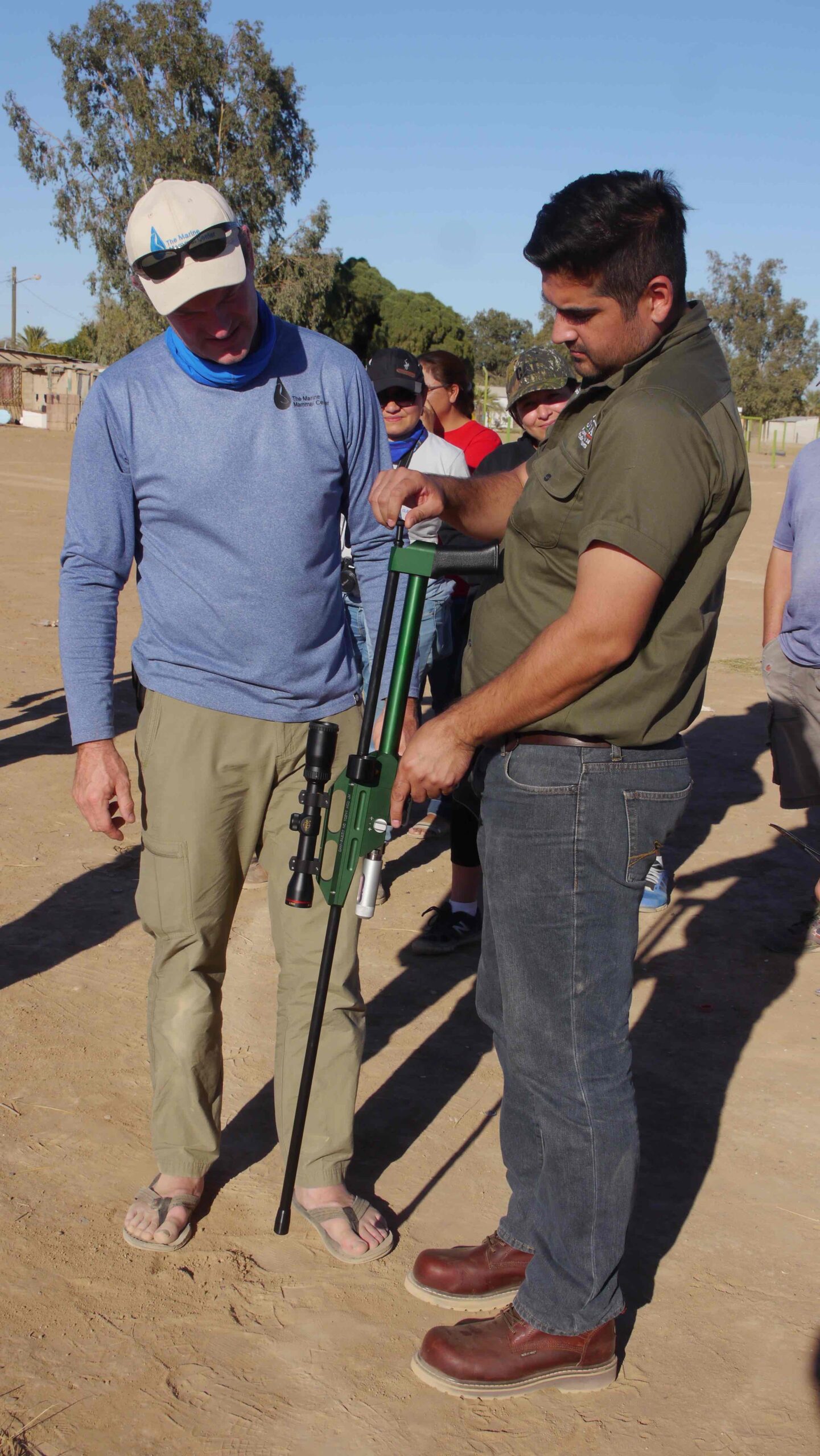 ning. At that time, rescue vessels begin looking for appropriate animals that fit the protocol for a successful rescue. The animal chosen must first be clearly entangled. The use of high-powered binoculars and powerful digital cameras are used to ensure that and animal indeed has some type of physical entanglement surrounding their neck. At that point, a strategy is formed between team members. Sometimes animals will be shot with a specifically designed dart rifle, and on other occasions animals will be captured the old fashion way with specially constructed nets. It should be noted that WA is currently working on a redesigning these nets, which are typically made out of PVC and can be heavy and cumbersome to work with on the difficult terrain encountered at the islands of the Gulf of California.
ning. At that time, rescue vessels begin looking for appropriate animals that fit the protocol for a successful rescue. The animal chosen must first be clearly entangled. The use of high-powered binoculars and powerful digital cameras are used to ensure that and animal indeed has some type of physical entanglement surrounding their neck. At that point, a strategy is formed between team members. Sometimes animals will be shot with a specifically designed dart rifle, and on other occasions animals will be captured the old fashion way with specially constructed nets. It should be noted that WA is currently working on a redesigning these nets, which are typically made out of PVC and can be heavy and cumbersome to work with on the difficult terrain encountered at the islands of the Gulf of California.
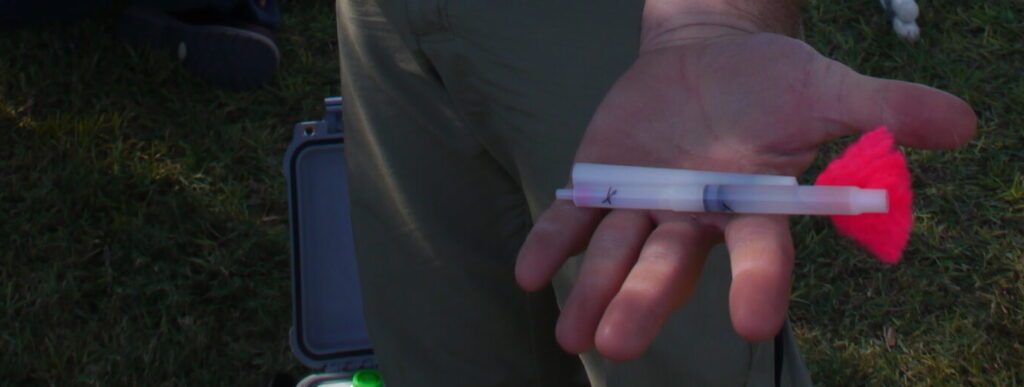
On our October 2022 trip to San Jorge, our team was unable to use the dart rifle. Unfortunately, at this time, the drugs that we need, Midazolam 50mg/ml Butorfanol 10 mg/mg and Medetomidine, are not available in Mexico and must be brought down from the United States. Due to the difficult terrain, we limit the size of a sea lion that can be darted to between 60 and 90 kg, although Daniela Barcenas our head veterinarian once worked on a sea lion down in Cabo San Lucas that was 200 kilos. Since we were not able to use the dart gun at San Jorge, we relayed on our nets and limited the size of sea lions to between 40 and 50 kg. When a sea lion has been successfully captured it must be transported to a safe and stable area where the animal will be anaesthetized, operated on and released back into the wild. In the case of San Jorge island, there are several appropriate rocky beaches where the operation will take place. In other islands around the gulf, it may be necessary to operate on an animal in a boat or a specially designed inflatable platform that has yet to be purchased.
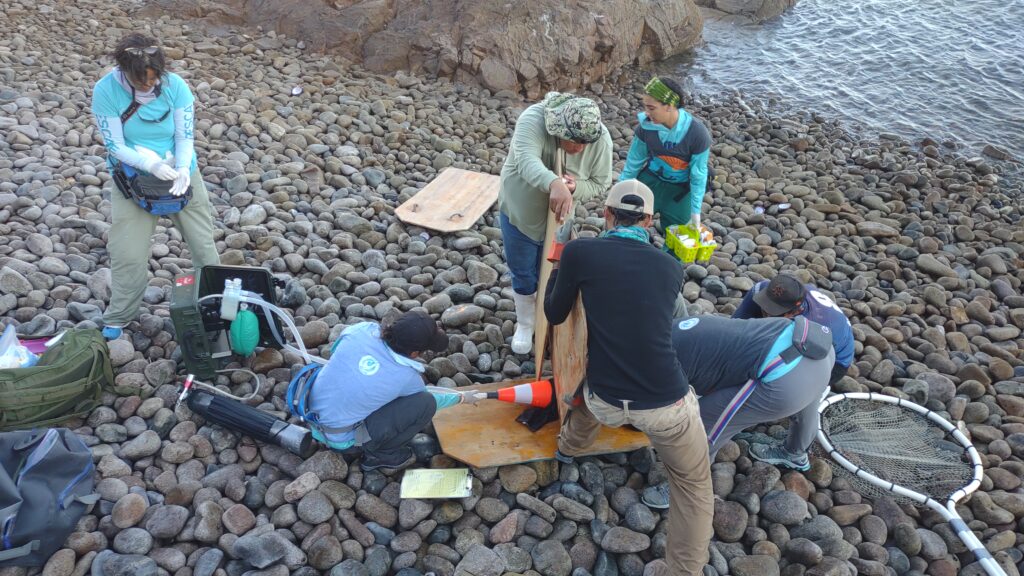
Sea Lion First Aide
Once a sea lion has been taken to a stable spot on the island, the team of veterinarians will now take over. The sea lion must be immobilized while it is put under anaesthesia. Once the animal is fully anaesthetized, what ever type of gear that is strangling the animal will be removed. Once the gear has been removed from the sea lion’s neck, the gear is catalogued. The sea lion is then marked with a special ink and often a tag is placed on the fin of the animal. Reversal drugs will then be administered to the sea lion. Within 10 to 20 minutes, the sea lion will then wake up from the anaesthesia and run back into the water. The whole process can take between one and two hours from capture to release. A file for each sea lion is created, and the animal is also given a name.
This web page and our website are still under construction. The protocol described here of SLD is by no means complete. But for those unfamiliar with the process, this should give you a good idea of the energy that is involved to save these animals. If you have read this and would like to donate to our organization, please email Vince at the following address. WorldsAquarium@admin
